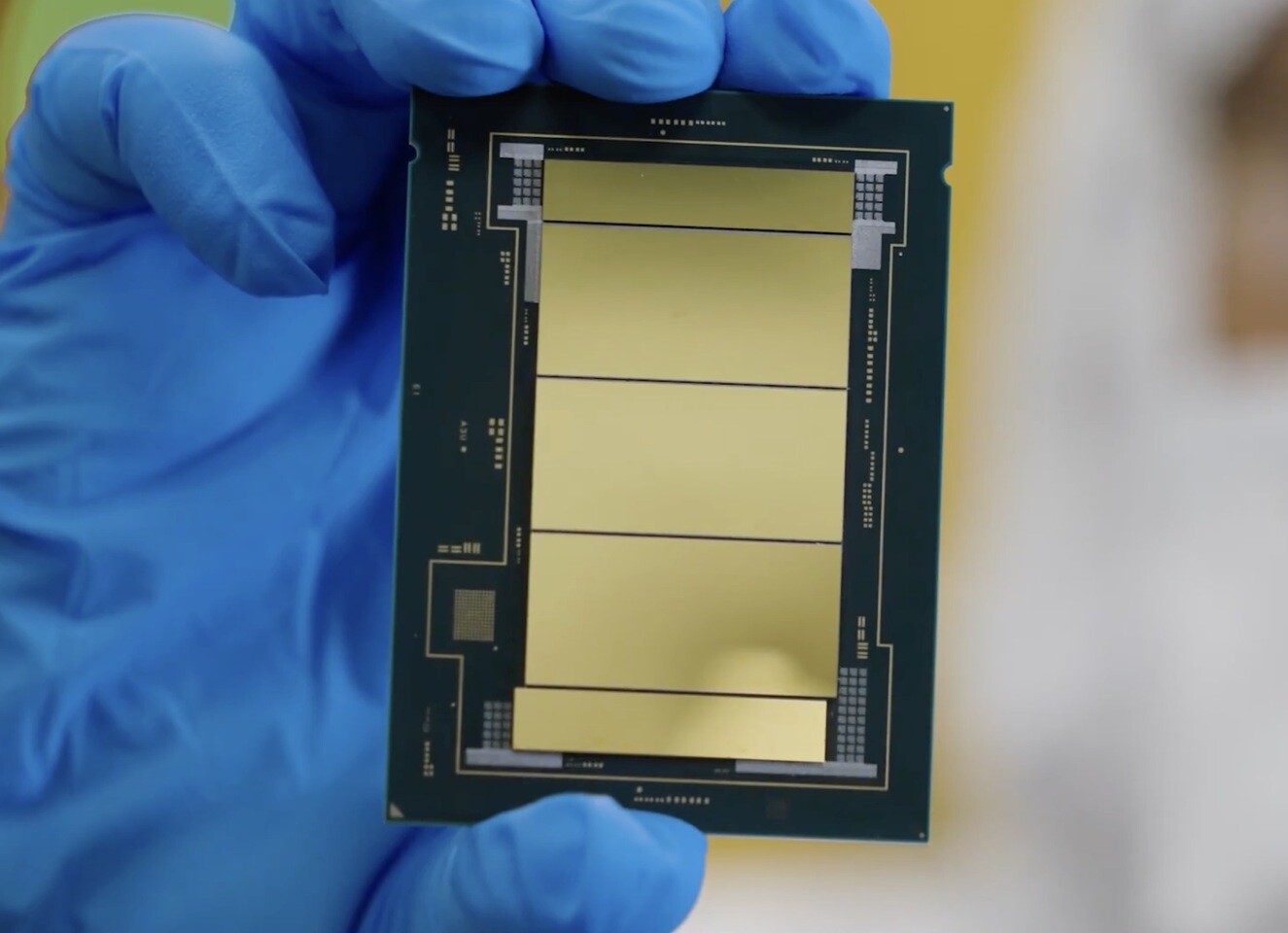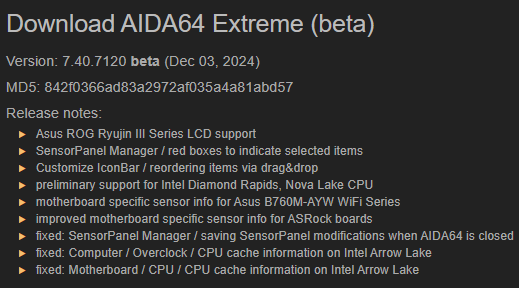FinalWirehas added preliminary support for Intel’s Nova Lake and Diamond Rapids Xeon processors in the latest beta release of AIDA64—months or years before the CPUs hit shelves. This means that AIDA64 can now at least recognize these processors, though other functionality might be limited. Other updates include improved support on ASRock motherboards and a few bug fixes that led to incorrect specs being displayed for Intel’s Arrow Lake processors.
For more context, AIDA64 and a handful of otherbenchmarkingsuites lay initial groundwork years before the product materializes. In July last year, AIDA64 received preliminary support for AMD’sZen 5 CPUlineup, which launched this year. To reiterate, preliminary support only identifies the CPU and nothing more. As support matures, expect improved compatibility across utilities like CPU-Z and Geekbench.

Still, Nova Lake and Diamond Rapids aren’t expected to retail anytime soon. Nova Lake, slated as the successor to Arrow Lake on desktop, is expected to arrive sometime in 2026-27.
Word on the street is that Intel is equipping these CPUs with Coyote Cove P-cores (renamed fromPanther Cove) and Arctic Wolf E-cores. Provided Intel doesn’t port Panther Lake to LGA 1851 mid-generation, Nova Lake—hailed as the successor to Arrow Lake—will reportedly fix itsmemory latencyissues. Additionally, a large portion of Nova Lake will bedesigned in-houseand expected to leverage the 18A node. Core counts and expected performance metrics are whispers in the wind for now.

Conversely, Diamond Rapids - succeeding Granite Rapids - allegedly uses a massiveLGA9324 socket(Oak Stream platform) with nearly 10,000 contact pads. Since Intel did reveal Granite Rapids just a couple of months back, Diamond Rapids might be pushed into late 2025 or 2026 againstAMD’s Venice(Zen 6) server CPUs. Diamond Rapids Xeon processors should employ Panther Cove-X-based P-cores and are expected to introduce the new enhancedAVX10.2instruction set. Again, it is likely to be fabricated using Intel’s 18A node.
There is a slight possibility Intel could introduce a “Local Cache” akin to its Clearwater Forest chips on Diamond Rapids and Nova Lake, but that’s speculation for now. Nonetheless, these are undoubtedly some of Intel’s most ambitious and high-profile projects—so much so that the company’s turnaround—despite therecent corporate fiasco—hinges on their and 18A’s success.

Get Tom’s Hardware’s best news and in-depth reviews, straight to your inbox.
Hassam Nasir is a die-hard hardware enthusiast with years of experience as a tech editor and writer, focusing on detailed CPU comparisons and general hardware news. When he’s not working, you’ll find him bending tubes for his ever-evolving custom water-loop gaming rig or benchmarking the latest CPUs and GPUs just for fun.